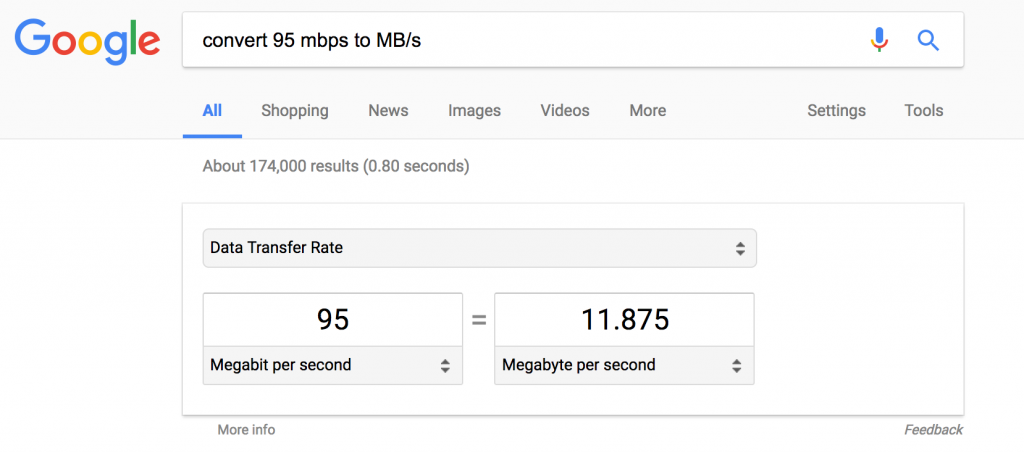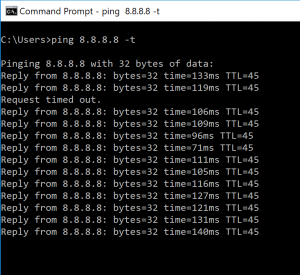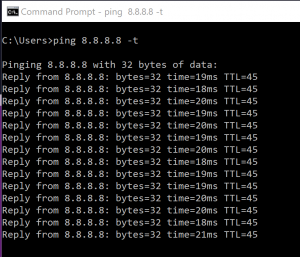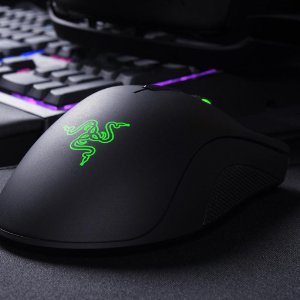The Steam Client Bootstrapper (32 bit) Process Can Overwhelm Your Internet Bandwidth And Cause Poor Network Performance For Everything – Here’s How to Fix

If you are a user of Valve’s excellent Steam digital game distribution platform, here’s an Internet bandwidth issue you may be experiencing. Basically, the Steam Client Bootstrapper process may be using your entire Internet bandwidth to download updates. This is good and bad, at the same time.
In this article, we’ll tell you how to fix the problem the right way.
Why This is Both Good and Bad, At The Same Time
The Steam Client Bootstrapper (32 bit) process is the background task that Steam uses to download and coordinate any updates or missing files. It connects to Steam’s servers, checks the current version, and then downloads any updates or missing files. It’s represented by the Steam icon down in the Windows tray. As such, it’s an essential component of the Steam program. You can kill the task, but it’s going to come back – and start downloading again. So, if it’s hogging too much CPU or network we recommend you fix the underlying issue in the correct way. Follow the instructions as described in this article.
It’s good because Valve has built a super-efficient download mechanism that will use every bit of download bandwidth available on your network. This means your downloads will be as fast as possible – and you’re getting that game, or game update, or other digital content that you want as quickly as possible. I suspect they are using an UDP based file transfer protocol of some sort, along with a CDN – to overcome the usual performance limitations of TCP downloads.
But it’s also bad because it will cause every other device and process to have network issues. When all your download bandwidth is in use, TCP/IP packets start dropping, and all the other things going on in your network can grind to a halt, or at least suffer in ways that are very annoying. For example, when downloads are running un-throttled, streaming devices such as Apple TV or Roku will not offer good performance – lots of buffering, if they work at all. Similarly even web page loading and other services will also suffer. And last but not least online multi-player games aren’t going to work real well either.
How To Identify This Problem
How do you know if you are encountering this problem? Here’s the warning signs:
- You’ve not selected any of the download restriction settings in the Steam client
- All devices on the network have issues with Internet performance
- Task Manager shows a process named Steam Client Bootstrapper (32 bit) using a network download rate that matches your maximum Internet download bandwidth allocated to your plan
In this screenshot, I’ve launched the Task Manager (this is Windows 10) and sorted descending on the Network column, by clicking on the Network column header. You can see that the process is using 95 Mbps of bandwidth. It just so happens that’s the maximum download bandwidth my Internet connection allows. You might be wondering about the 10%. Sounds like we’ve got plenty of headroom, no? To the PC, that’s only 10% of the maximum 1 Gbps Ethernet connection it has. But that’s the Local Area Network (LAN) speed. It’s 10% of the PC’s capability, but it’s 100% of my internet connection’s capability.

How To Fix This Problem
The fix is simple:
- Open the Steam program
- Navigate to Settings, Downloads
- Set one or more of the options, including restricting the time frames that downloads can happen and most importantly throttle the bandwidth available for downloads
- Restart Steam
- A cable internet connection – with maximum 95 Mbps download and 12 Mbps upload speeds.
- Wi-Fi router
- Wired Ethernet access via Gigabit Ethernet mini-switches
- Numerous devices, including multiple Windows PCs, Mac, iPhone, and Roku streaming device. Some connected on Wi-Fi, some on wired Ethernet, or both.
- My son complained his PC games were lagging and near unplayable – on an Ethernet connected Windows 10 PC
- I was noticing bad performance on general web surfing on a Wi-Fi connected Mac.
- Our Roku TV streaming device was not working well. The Roku is also Wi-Fi connected
- What’s your maximum Internet download speed? – your ISP bill should state what your download and upload bandwidth limitations are. In my case it’s 95 Mbps/12 Mbps. It’s worth nothing that I think we’re sold a 90/10 plan – so kudos to Spectrum for giving more than the agreed amount of bandwidth. I know my speeds are typically 95 down / 12 up, because I’ve baselined using Speedtest.net when things are good.
- Similarly, know your maximum Internet upload speed. On cable internet this is going to be much lower than your max download. Home connections on coax are highly asymmetrical – because the typical household does FAR more downloading than uploading. It’s also because the technology used (coaxial cable) is already close to maxed out as far as bandwidth (with all those TV channels on it simultaneously, along with Internet, and voice, etc.) Why waste a lot of bonded channels on something people don’t need?
- Know your Ping times. What’s typical RTT (Round Trip Time) reported by ping when you hit a known server? I like to use ping 8.8.8.8. That is one of Google’s name servers and it responds to ping commands. A “normal” ping time for MY connection is from 20 ms to 30 ms. Yours may be different. So don’t use mine. Find your own.
- Know the limitations of your equipment. Are all devices on Gigabit Ethernet? Are your switches Gigabit Ethernet? A network connection can only go as fast as the slowest link, so if you’ve got a 100 Mbps connection somewhere in the chain, that’s going to be a bottleneck.
- The cable modem
- The Wi-Fi router (which serves as the network router in this case, even for the wired PCs)
- The Ethernet mini-switch
- Ergonomic design with 7 easy-to-reach buttons
- 16,000 DPI optical sensor
- Gaming-optimized Razer mechanical mouse switches – rated for milllions of clicks
- Chroma lighting with 16.8 million customizable color options – If it works good, let’s make it look good too.
You should see an immediate change, which you can verify in Task Manager.
In this example below, I’ve set it to download updates most of the day but to only use less than 1/2 of my available Internet bandwidth. This is the best of both worlds – we can get game updates at any time, but the network remains usable for everybody else (and anything else I want to do at the same time!)

The Steam bandwidth throttle options are displayed in MB/s. This is Megabytes Per Second (MBps), NOT Megabits Per Second (Mbps). That upper case “B” makes a big difference. You probably know your max download speed from your ISP in Mbps, so how to convert from MBps to Mbps? Use Google and a query such as “convert 95 Mbps to MB/s”. My Internet connection is about 11 MB/s, so I chose to use 5 MB/s, less than half (there’s only so many options offered in the Steam client throttle settings.

Problem Solved
So there you go, how to identify and fix the problem. Here’s a final shot showing the process consuming bandwidth far below the connection maximum and abiding by the bandwidth throttle setting.

All is well on the network again. At this point, you are done, you’ve fixed it.
But, if you want to know more about how to troubleshoot network issues in general please read on, we’ll cover that topic next.
Solar panels have come a LONG way – check out these amazing portable power solutions that use the best of Li-Ion battery tech and solar panels for endless power – anywhere.
To revitalize an aging computer, an excellent step is to replace an old fashioned spinning mechanical hard disk with a Solid State Drive (SSD). This single change alone can breathe new life into a PC – for years. It’s the best performance bang for the buck. And prices are very reasonable, even for a 1 Terabyte size drive.
We recommend the Samsung 850 PRO – 1TB – 2.5-Inch SATA III Internal SSD (MZ-7KE1T0BW) (Buy on Amazon). Why? The Samsung 850 line has shown to be very high performance, reliable, and available in 1 TB size – perfect for the boot or OS drive of a gaming PC – but enough space to let you install quite a bit on it. The PRO model has twice the endurance of the previous model. This SATA III model is 2.5″ size and compatible with just about every computer.
Recommendations for Valve software developers
Attention good people of Valve Software: Please display your network limits in Mbps , as most people are far more familiar with that measure. Secondly, please implement some sort of detection feature that measures available bandwidth, and defaults to 85% or 90% of total bandwidth for downloads, rather than 100%.
Next, let’s discuss how to troubleshoot network performance issues from a general sense. This is the exact process I used to zero in on this specific issue.
How To Troubleshoot Home Network Performance Issues
You may also be interested in reading about how to save money through cord cutting. What is that? It’s getting rid of expensive and inflexible cable TV subscriptions for more flexible Internet based streaming options and “Over The Air” (OTA) digital broadcasts. Find out more here: Cord cutting with PS Vue and Roku Streaming Stick+
Troubleshooting home network performance issues is like any other troubleshooting process – it’s all about using the process of elimination to find the root cause (or at least the likely root cause). In this case, I’ve got a typical modern home network:
Let’s get started.
Step 1 – What’s the problem and symtpoms?
In this case, I had the following complaints:
Step 0 – It’s good to have a Baseline. What Does Good Look Like?
Actually, let’s backup a minute.
This process is immensely easier if you know what “normal” or “good” looks like – from a network perspective. That way as you are experimenting and checking you know what’s normal and what’s not. What should you know?
If you know those 4 things, then you know what good looks like. Therefore, you’ll know when things are off.
Step 2 – Identify the Scope of the Impact
Next, you must identify the scope of the impact. From the symptoms exhibited, it certainly sounded like a general network issue – because multiple devices were affected in the same general timeframe. Therefore it’s not likely that any one device was having an network issue – it must be a problem common to all the equipment.
Secondly, given that an Ethernet connected PC (with no Wi-Fi connection whatsoever) was experiencing issues, I immediately deduced it was not likely a Wi-Fi issue. Wi-Fi, because of the chaotic, crowded environment (the radio frequency spectrum) it operates in, is notorious for wild swings in performance. As a general best practice your first step should be to determine – is it the Wi-Fi or not the Wi-Fi? If it’s not the Wi-Fi – Don’t troubleshoot over Wi-Fi – get a wired Ethernet connection. I have deep thoughts on why Wi-Fi is miserable, compared to wired, but we’ll save those for a future blog post.
Step 2 – Further Isolate Impact
Believing it to be a general network issue, I connected a second Windows 10 laptop I have to the wired Ethernet network. I then ran a “ping” command to see how far off baseline things might be. On both Ethernet connected PCs, I observed a ping time of 120 ms – 130 ms. Remember, my baseline is 20 – 30 ms. This is 5-6x slower than usual, and I also saw dropped packets (request timeout). How do you run a ping command? Use cmd.exe and type the command as shown. Here’s a screenshot:

Having observed that, there’s definitely something wrong with the Internet connection, the connection used by multiple PCs.
I also ran a speed test. And noted it was far off the normal values. This can be for a couple of reasons – something else (on your network ) is using all your bandwidth, your cable modem isn’t working properly, or your ISP may be having issues.

We mentioned that could be a modem problem. The easiest modem troubleshooting step? Reboot it.
Step 3 – When Was Your Last Reboot?
At this point, let’s talk about the inevitable. When did you last reboot? This has become the fodder for many jokes about IT support, but it’s recommended for a reason – it works.
We rebooted one of the Windows 10 PCs. And observed the problem was still occurring. We then rebooted the network equipment. You must remember that network devices (switches, Wi-Fi Routers, Firewalls, and Cable Modems) are all just super-specialized computers. They need upgrades and they need reboots. Why? Because the software running within them isn’t perfect. It’s got bugs and memory leaks and other issues just like your PC or Mac OS.
So we powered off the equipment and booted it back up, in a controlled fashion:
On a sidenote, nobody ever reboots their mini-switch because they think they are infallible. I’m here to tell you that simply isn’t true. I’ve seen MANY network performance issue resolved by rebooting a mini-switch (I work for an IT Managed Services Provider). It’s one of the reasons I DO NOT recommend them for a high performance business environment (or use them sparingly, if you have to).
After having done all that, the performance issue was still present.
Step 4 – Check Out Of Control Processes on the Machines
The next step is to use Task Manager (Windows) or Activity Monitor (Mac) to look for processes hogging the network. Normally, I’d have done this before going to the trouble of rebooting all the network equipment, but in this case I was misled by the problem. We’ll talk about that more in a bit.
It’s also possible that you’ve got a malware running invisibly in the background. These can be network hogs – those “distributed denial of service” (DDOS) attacks you hear about? THat’s usually hundreds or thousands of compromised home computers running malicious processes. In this case we ran a Windows Defender offline scan. But it came back clean.
Then I looked at Task Manager on the PC which had Steam installed. And this is what I saw. As mentioned previously, my maximum connection is 95 Mbps, and Steam Client Bootstrapper (32 bit) was hogging up every bit of it. When this happens, it’s bad. It’s absolutely the root cause of dropped packets and poor performance for EVERY device on the network. Because all incoming and outgoing traffic has to go through that Internet connection – if one device is monopolizing it, it’s gonna be bad for everyone else.

To confirm, I used End Task to kill the process, and immediately the network ping stats returned to normal.

After that, a quick Google search confirmed the issue and fix – set the throttle limits on Steam downloads.
What Could Have Been Done Differently?
I could’ve solved the problem quicker. If I was familiar with the software installed on the Windows 10 gaming PC, I might’ve been clued in earlier. But sometimes you just don’t know what’s there, or how it’s used. Whether troubleshooting your own network, your neighbor’s or that of a client, this general process will help you isolate issues, even if you aren’t familiar with the environment.
Secondly, what if we had not found any bandwidth hogging process? What if the issue was at the ISP end? Well, that’s where you simply need to call your ISP for support. There’s a number of performance checks they can run remotely. They will access your cable modem and confirm if it’s working well or not by checking the signal strength. They’ll also check the firmware version and confirm if it’s a “known good” version , or a version that is known to contain bugs or other issues.
And lastly, running out of upload bandwidth is just as problematic from a network performance issue. You will see much the same impact across all devices. So if something is uploading heavily, that can cause problems too.
We recommend the Razer DeathAdder Elite (Buy on Amazon).

Why?
Trademarks and Photo Credits
Steam and the Steam logo are trademarks and/or registered trademarks of Valve Corporation. This website is not associated with Valve Corporation, or Steam in any official capacity. We are simply trying to provide some useful information.
Some of the product photos and images on this page are property of the manufacturer, and provided by the manufacturer.


